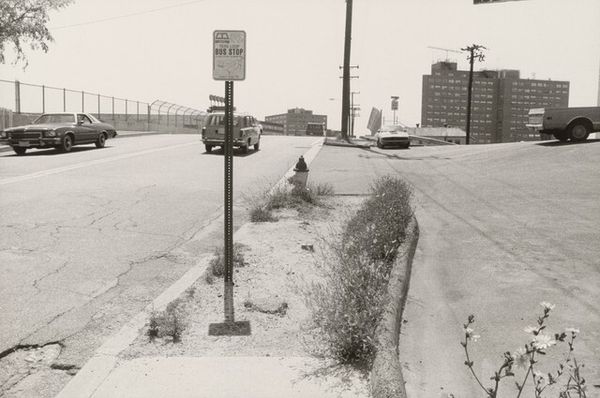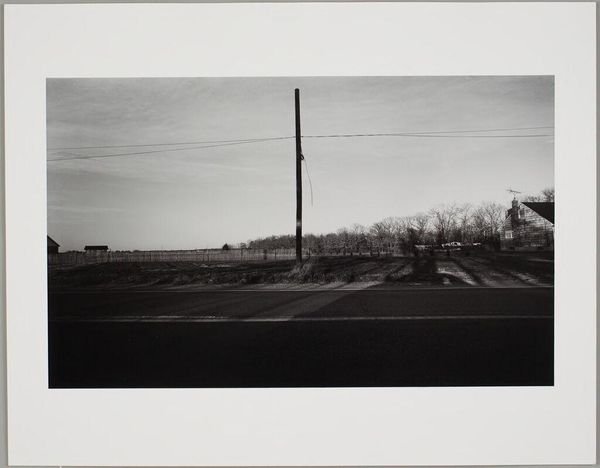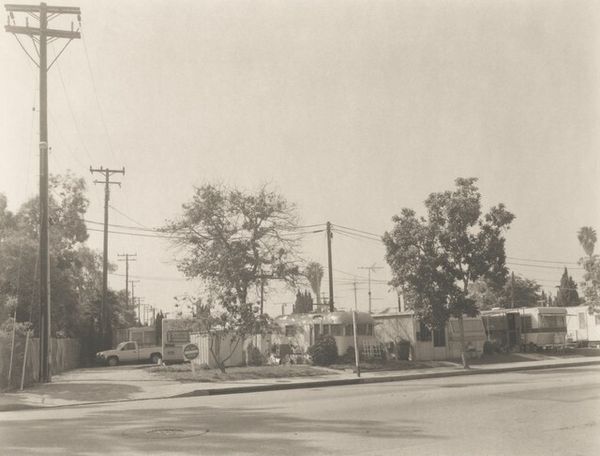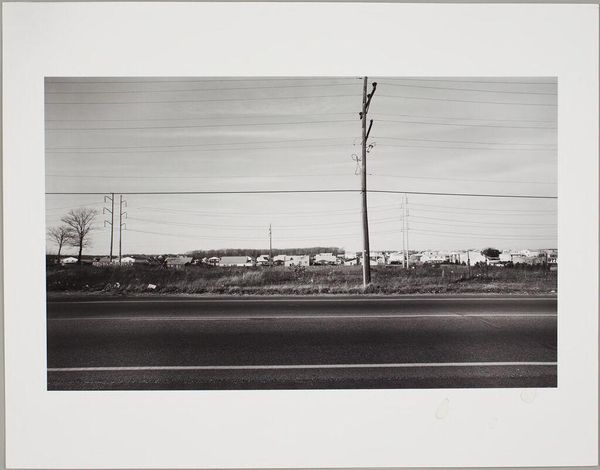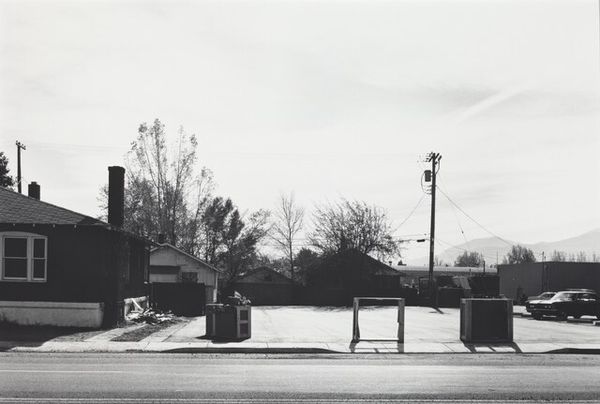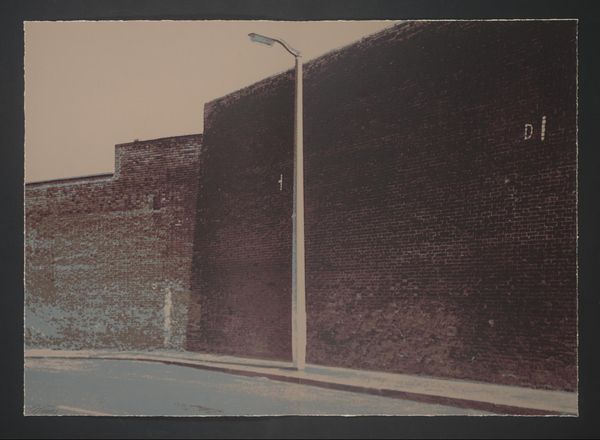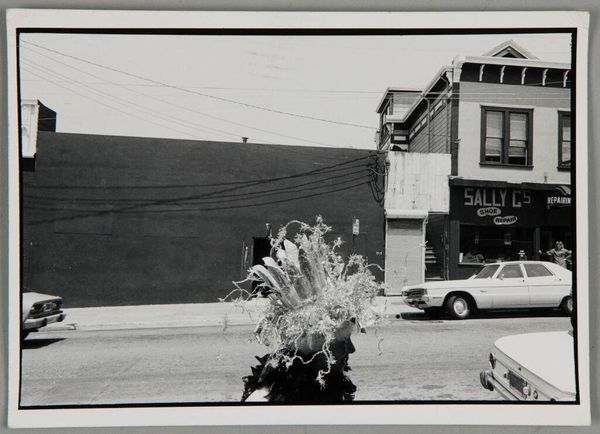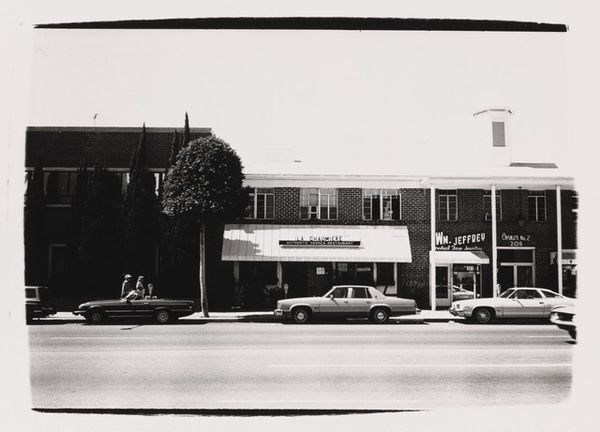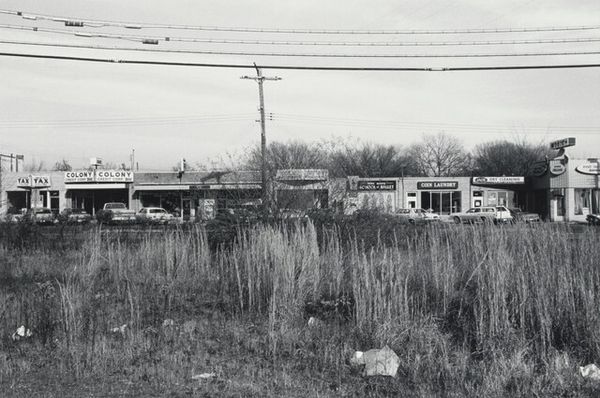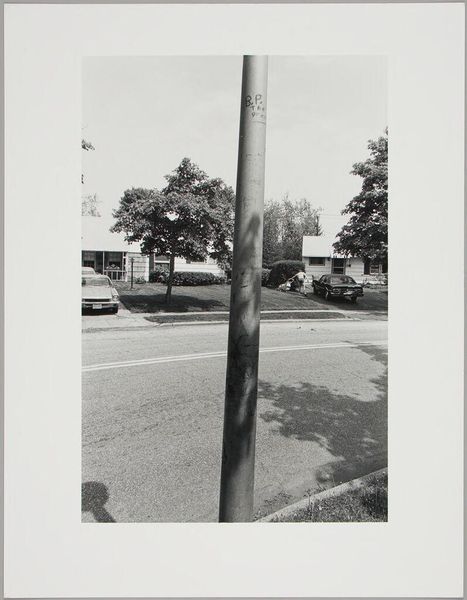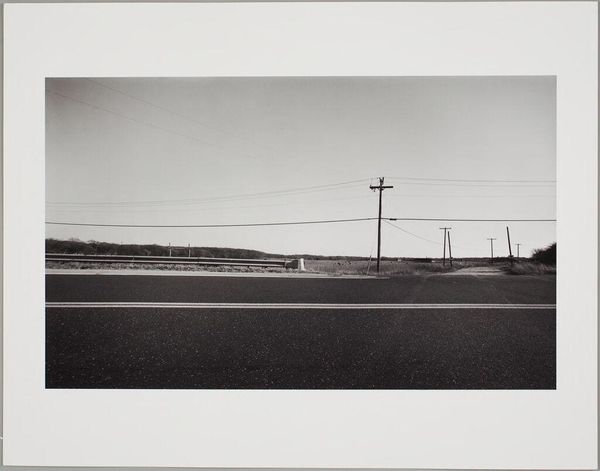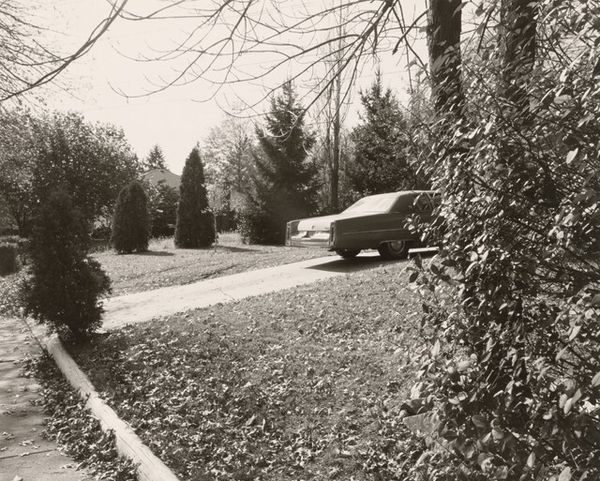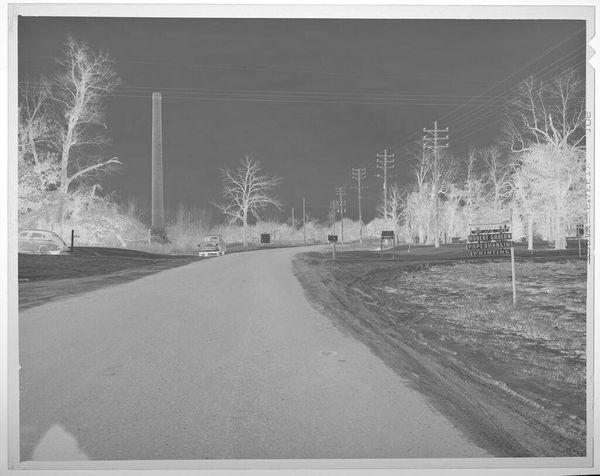
Marlboro Pike and Boone's Lane, Upper Marlboro, Maryland, Looking Southwest 1976
0:00
0:00
photography
#
cloudy
#
black and white photography
#
landscape
#
outdoor photograph
#
outdoor photo
#
street-photography
#
photography
#
outdoor scenery
#
sky photography
#
monochrome photography
#
outdoor activity
#
monochrome
#
realism
#
monochrome
#
shadow overcast
Dimensions: image: 32.07 × 48 cm (12 5/8 × 18 7/8 in.) sheet: 40.64 × 50.48 cm (16 × 19 7/8 in.)
Copyright: National Gallery of Art: CC0 1.0
Editor: Here we have John Gossage’s 1976 photograph, “Marlboro Pike and Boone’s Lane, Upper Marlboro, Maryland, Looking Southwest.” It’s a black and white image of an intersection, almost desolate. What jumps out to me is the strong horizontal composition, but there’s also a stillness, a quietness, that is interesting. How do you read this photograph? Curator: Initially, I am drawn to the geometric interplay. The receding lines of the road establish a strong perspective, but they are abruptly halted by the imposing block of the building in the distance. Consider, too, the formal relationships between light and shadow. Notice the flattened effect created by the overcast sky, pushing all elements onto a single visual plane. What do you observe about the textural variations in the photograph? Editor: Well, there’s a contrast between the smooth road and the rougher texture of the building and the telephone poles on each side, adding to the feeling of emptiness. It feels…very balanced. Is it *too* balanced? Curator: The photograph’s visual equilibrium underscores its deeper inquiry. The seemingly banal subject matter - a simple intersection - gains potency through its rigorous formal organization. Consider the subtle gradations within the grayscale palette: how the interplay of tones create depth and volume, despite the flattening effect you observed. Are these simply documentary choices, or are there expressive aims at play? Editor: I see your point. It’s more than just a snapshot. Gossage really thought about the composition, the contrasts... Thanks for the insight! Curator: Indeed, by interrogating the intrinsic elements of photography itself – its tonal range, compositional structures, and its capacity to render form – the image transcends its seemingly ordinary subject. I appreciate your thoughtful observation.
Comments
No comments
Be the first to comment and join the conversation on the ultimate creative platform.
